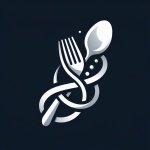Cutting Costs, Boosting Profits: Innovative Solutions for Restaurant Owners
Menu Engineering Techniques: Maximizing Profitability
In the competitive landscape of the restaurant industry, mastering menu engineering techniques is essential for optimizing profitability. Think of your menu as a strategic blueprint, guiding customers towards high-margin items while maintaining a delightful dining experience.
One effective strategy is to categorize menu items based on their profitability and popularity. By identifying your stars, plowhorses, puzzles, and dogs, you can prioritize promotions and adjustments to boost revenue streams and minimize wastage.
- Identify Your Stars: These are the high-profit, high-demand items that are the backbone of your menu. Highlight them strategically to attract customer attention and drive sales.
- Address the Puzzles: Puzzles are high-profit but low-demand items. Consider creative marketing tactics or menu placements to increase their visibility and appeal.
- Trim the Dogs: Low-profit, low-demand items can drag down your overall profitability. Evaluate whether to revamp, reposition, or remove these items to streamline your menu and focus on what sells.
Furthermore, adjusting pricing strategies based on ingredient costs and customer preferences can help maintain margins without compromising perceived value. By continuously analyzing and refining your menu offerings, you can ensure that every dish contributes positively to your bottom line.
Efficient Inventory Management: Minimizing Wastage
Effective inventory management is a cornerstone of cost control in the restaurant business. By implementing efficient inventory practices, restaurant owners can minimize wastage, reduce carrying costs, and optimize cash flow.
Start by conducting regular inventory audits to track stock levels and identify areas of excess or shortage. Utilize inventory management software to streamline this process, enabling real-time tracking of ingredients and supplies.
- Set Par Levels: Establish optimal inventory levels for each item based on demand patterns and supplier lead times. Maintaining par levels helps prevent overstocking while ensuring you have enough inventory to meet customer demand.
- Implement FIFO: Adopt the "first in, first out" (FIFO) approach to ensure that older inventory is used before newer stock. This helps prevent spoilage and ensures freshness, particularly for perishable items.
- Streamline Supplier Relationships: Consolidate purchasing with select suppliers to leverage bulk discounts and streamline order processing. Negotiate favorable terms and delivery schedules to minimize costs and optimize inventory turnover.
Additionally, consider menu engineering insights when managing inventory. Focus on promoting high-margin items and optimizing ingredient usage to reduce food waste and maximize profitability.
Innovative Solutions for Streamlined Operations
Embracing innovation is key to cutting costs and boosting profits in the restaurant industry. By leveraging technology and adopting modern practices, restaurant owners can optimize their operations and stay ahead in a competitive market.
- Automate Inventory Management: Invest in inventory management software that offers features like real-time tracking, automated replenishment, and predictive analytics. These tools can help you make data-driven decisions, reduce manual errors, and optimize inventory levels.
- Utilize Cloud-Based Solutions: Cloud-based platforms offer scalability, flexibility, and accessibility, allowing you to manage your restaurant's operations from anywhere. Whether it's inventory tracking, staff scheduling, or customer relations, cloud-based solutions streamline processes and improve efficiency.
- Implement Lean Practices: Adopt lean principles to minimize waste, eliminate non-value-added activities, and optimize resource utilization. Conduct regular process reviews to identify inefficiencies and implement continuous improvement initiatives.
Furthermore, prioritize staff training and empowerment to ensure everyone is aligned with your cost-cutting and profit-boosting initiatives. Encourage employees to contribute ideas for improvement and recognize their efforts to foster a culture of innovation and efficiency.
By implementing these innovative solutions and fostering a culture of continuous improvement, restaurant owners can achieve sustainable cost savings and drive long-term profitability.
